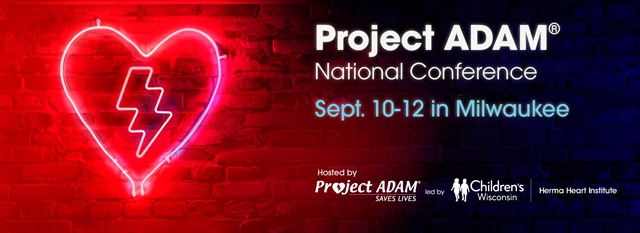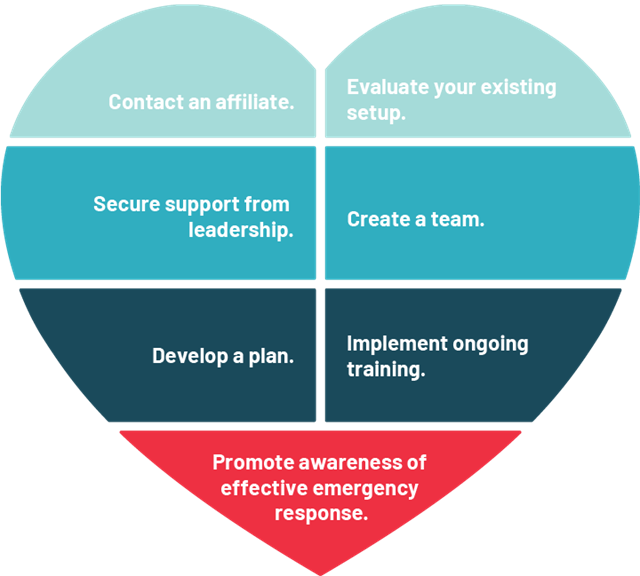
Imagine attending a community event and watching someone collapse. Would you know how to spring into action? With Sudden Cardiac Arrest, every moment counts. Project ADAM helps schools, sporting programs, and community sites become Heart Safe, connecting you with the resources needed to respond during those first critical minutes after a Sudden Cardiac Arrest.
Project ADAM has saved lives, and can do so in your community as well.
Prepare.
Communities need the proper equipment, training, and an ongoing plan in place to save lives.
Take Action.
Affiliates are your local experts and can connect you with the resources you need to be Heart Safe.
Advocate.
Project ADAM advocates for legislation to empower communities to respond.
Join us Sept 10-12!

We are bringing the national conference back to its roots, where Project ADAM first began – in Milwaukee!
Visit the conference website to learn more and register. Interested in supporting the conference?
Review the exhibitor & sponsor prospectus to get started.

Adam and Our Mission
Adam was a happy, athletic teen who made friends easily. He loved spending time with his family, playing tennis and basketball, and wanted to make a difference in the world. Adam was a 17-year-old athlete in peak athletic condition when he collapsed during a basketball game and suffered Sudden Cardiac Arrest. When his family learned that he could have been saved with the right preparation and equipment, they founded Project ADAM (Automated Defibrillators in Adams Memory) to be sure everyone is given the best possible chance to survive.
How to Become Heart Safe
Adam wanted to make the world better - and this hope lives on through Project ADAM. Project ADAM creates the opportunity for anyone to spring into action in the face of Sudden Cardiac Arrest.
Your community can be Heart Safe. Understand what it takes.

Every moment matters
in Sudden Cardiac Arrest
The best chance of saving a life is within the first 4 minutes of a Sudden Cardiac Arrest.
Immediate CPR and the availablility and use of an Automated External Defibrillator (AED) can double or triple a person's chance of survival.
Often there is no prior warning sign that indicates a person at risk of Sudden Cardiac Arrest.
It takes an average of six minutes (urban/suburban areas) and 13 minutes (rural areas) for first responders to arrive.
Survival rates decrease by 7-10 percent with each minute of delayed defibrillation.
Over 200 lives have been saved at Project ADAM Heart Safe sites.
1.CARES 2016 data. 1. Mell et al, 2017, Emergency Medical Sercice Repsonse Times in Rural, Suburban and Urban Areas. JAMA Surgery, 152(10) 3. American Heart Association 4. Larsen, M. Eisenberg, M., Cummins, R. & Hallstrom, A. (1993). Predicting survival from out-of-hospital cardiac arrest: A graphic model. Annals of Emergency Medicine., 22(11), 1652-1658.
Project ADAM Saves Lives
When the community is prepared, lives are saved. As a direct result of Project ADAM, people have sprung into action and saved over 250 lives.
Hear some survivor stories.



